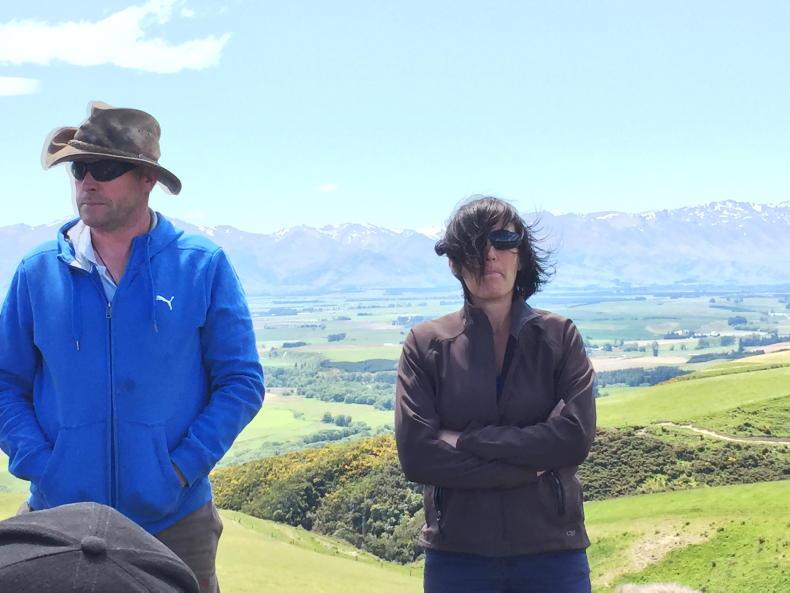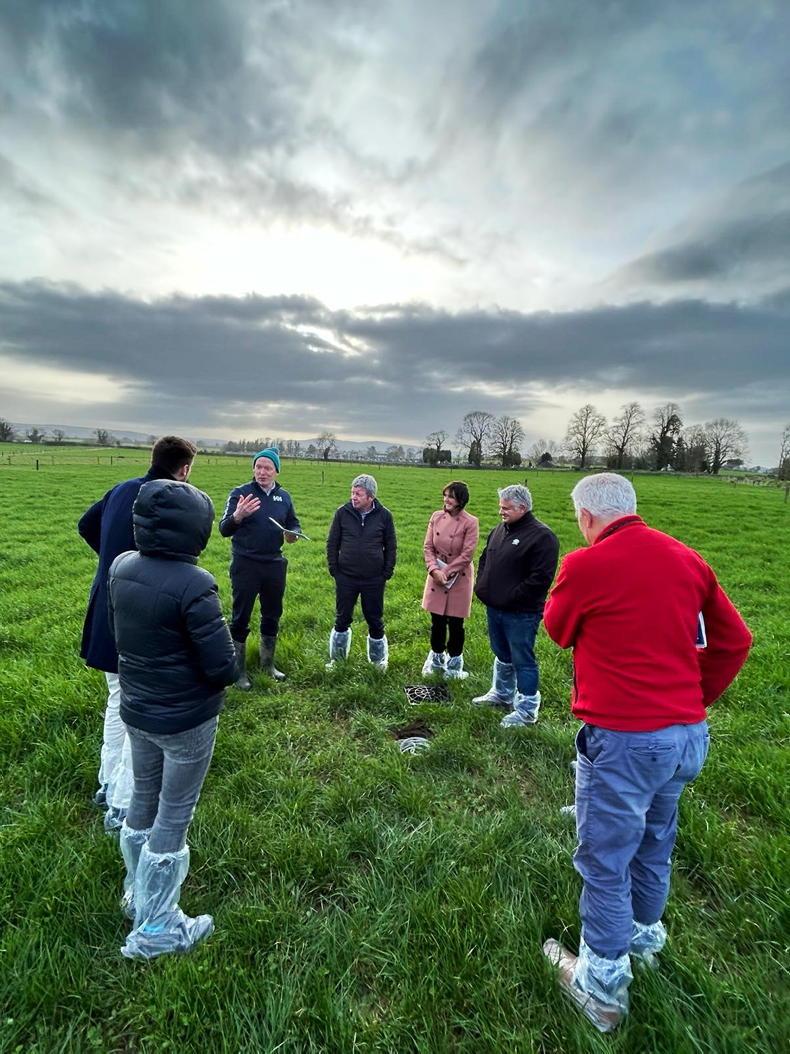I was prompted to write this piece because of a mistake in last weeks’ Irish Farmers Journal, which, due to a mix-up, said that Kieran and I have invested in Halter [automated heat and cow movement technology] for our herds. It’s clever technology which I’m sure one day will find a price point that actually enhances the bottom line instead of adding cost. When it does, it might be suitable to complement our farming systems. In the meantime, our aim is to farm the pasture curve with people who are trained to manage pasture.
From what I understand, the weather in Ireland has been so bad this spring that farming a pasture curve might sound like an unrealistic dream. While you were delivered too much water, we in Fairlie, in the South Island of New Zealand, had no rain since November. The local rivers hit their minimum flows in late December. As a result, farms with irrigators had no irrigation water since January. Just this week we finally got 40mm of rain. Our daughter, who had planned her 21st that day, was the only one unhappy about it.
So while Irish farmers have been keeping their cows in milk with supplements because you couldn’t harvest the pasture, we have been doing same because we didn’t have any pasture. Mentally, your situation has been tougher – at least we had sunshine with our problem season and somewhere the cows could stand.

Kieran and Leonie Guiney are farming more marginal soil types in New Zealand, but still manage to make positive returns by keeping costs and capital spend low.
The milk price has meant there has been a marginal benefit to keeping our cows in milk, but the big picture is this – we know we farm in a marginal environment, which is why we’ve minimised our capital expenditure to ensure a one in 10-year drought isn’t devastating for the business.
Another way to put this is your balance sheet strength is the ultimate risk mitigator. Strong balance sheets are determined by the price you pay for assets and the repeatable cashflows you can generate off them. When we get these things right, businesses can handle shocks such as weather.
We haven’t actually had to use the balance sheet, as our good spring offset our awful summer, but it’s the principle of balance sheet resilience that’s important. So we invest only in assets that improve that resilience, not ones that disimprove it by adding to our cost structure.
This principle is no less important for our co-operatives, which are extensions of our on-farm business. Fonterra in recent years has shored up its balance sheet and improved its discipline to generate repeatable surpluses.

Leonie Guiney and members of the Fonterra board, discussing grassland management with Brendan Horan, Teagasc, last month.
By way of encouragement, all I can say to Irish farmers is to try to look forward in decades rather than months. Put this awful spring in perspective as a once-off and remind yourselves of the great grass-growing environment your abundant summer rainfall and temperate climate delivers that makes you globally competitive.
Soaring energy costs are impacting farmers all over the world, so it’s even more important that our farming systems, that are already exposed to commodity cycles in the milk price, don’t overly expose ourselves to another commodity cycle, such as supplementary feed inputs, excessive nitrogen use or the use of capital investment, in the place of management skill.
Irish farmers have world-class farm systems and science at Moorepark to help apply these principles. I was reminded of this in March when our Fonterra board was hosted by Pat Dillon, Padraig French, Laurence Shalloo and Brendan Horan at Moorepark.
Don’t beat yourself up about being forced to keep your cows alive this year with supplements. Do it and then return to farming the strengths of your temperate climate that keep you near the bottom of the global cost curve.
I was prompted to write this piece because of a mistake in last weeks’ Irish Farmers Journal, which, due to a mix-up, said that Kieran and I have invested in Halter [automated heat and cow movement technology] for our herds. It’s clever technology which I’m sure one day will find a price point that actually enhances the bottom line instead of adding cost. When it does, it might be suitable to complement our farming systems. In the meantime, our aim is to farm the pasture curve with people who are trained to manage pasture.
From what I understand, the weather in Ireland has been so bad this spring that farming a pasture curve might sound like an unrealistic dream. While you were delivered too much water, we in Fairlie, in the South Island of New Zealand, had no rain since November. The local rivers hit their minimum flows in late December. As a result, farms with irrigators had no irrigation water since January. Just this week we finally got 40mm of rain. Our daughter, who had planned her 21st that day, was the only one unhappy about it.
So while Irish farmers have been keeping their cows in milk with supplements because you couldn’t harvest the pasture, we have been doing same because we didn’t have any pasture. Mentally, your situation has been tougher – at least we had sunshine with our problem season and somewhere the cows could stand.

Kieran and Leonie Guiney are farming more marginal soil types in New Zealand, but still manage to make positive returns by keeping costs and capital spend low.
The milk price has meant there has been a marginal benefit to keeping our cows in milk, but the big picture is this – we know we farm in a marginal environment, which is why we’ve minimised our capital expenditure to ensure a one in 10-year drought isn’t devastating for the business.
Another way to put this is your balance sheet strength is the ultimate risk mitigator. Strong balance sheets are determined by the price you pay for assets and the repeatable cashflows you can generate off them. When we get these things right, businesses can handle shocks such as weather.
We haven’t actually had to use the balance sheet, as our good spring offset our awful summer, but it’s the principle of balance sheet resilience that’s important. So we invest only in assets that improve that resilience, not ones that disimprove it by adding to our cost structure.
This principle is no less important for our co-operatives, which are extensions of our on-farm business. Fonterra in recent years has shored up its balance sheet and improved its discipline to generate repeatable surpluses.

Leonie Guiney and members of the Fonterra board, discussing grassland management with Brendan Horan, Teagasc, last month.
By way of encouragement, all I can say to Irish farmers is to try to look forward in decades rather than months. Put this awful spring in perspective as a once-off and remind yourselves of the great grass-growing environment your abundant summer rainfall and temperate climate delivers that makes you globally competitive.
Soaring energy costs are impacting farmers all over the world, so it’s even more important that our farming systems, that are already exposed to commodity cycles in the milk price, don’t overly expose ourselves to another commodity cycle, such as supplementary feed inputs, excessive nitrogen use or the use of capital investment, in the place of management skill.
Irish farmers have world-class farm systems and science at Moorepark to help apply these principles. I was reminded of this in March when our Fonterra board was hosted by Pat Dillon, Padraig French, Laurence Shalloo and Brendan Horan at Moorepark.
Don’t beat yourself up about being forced to keep your cows alive this year with supplements. Do it and then return to farming the strengths of your temperate climate that keep you near the bottom of the global cost curve.








 This is a subscriber-only article
This is a subscriber-only article











SHARING OPTIONS: